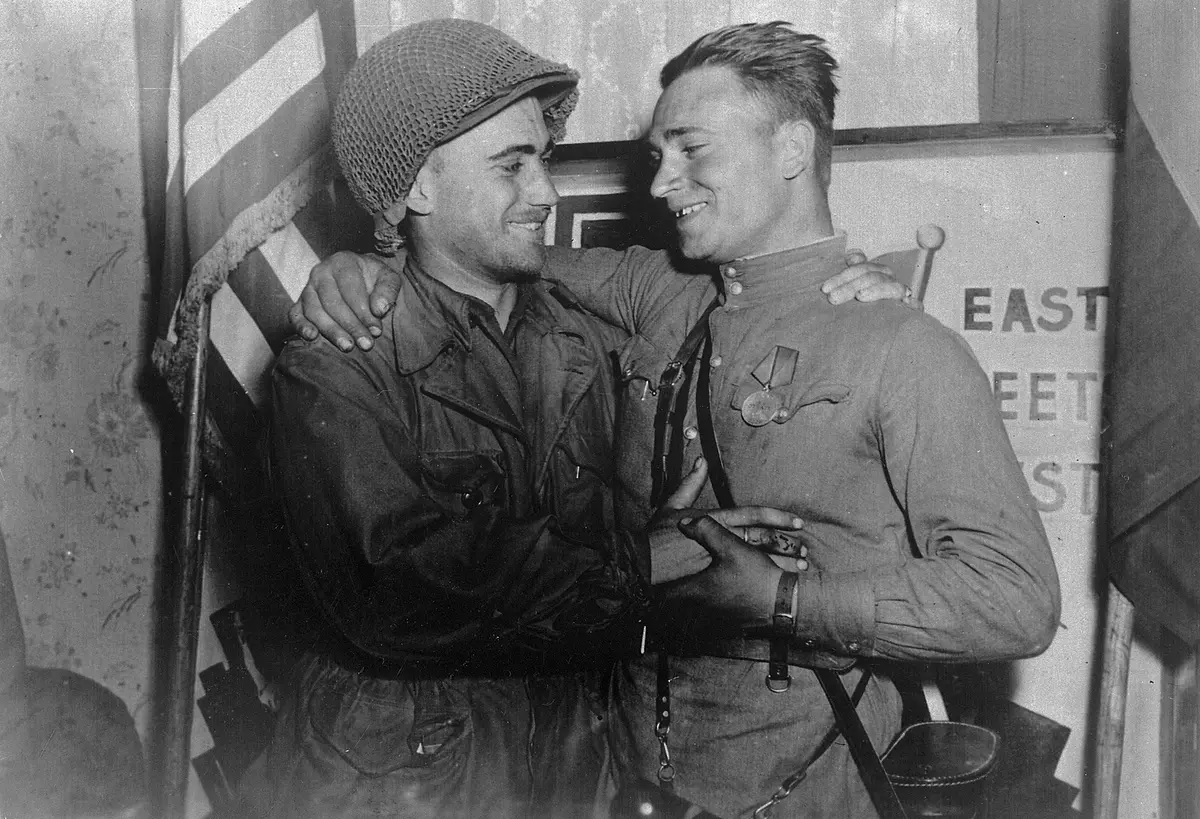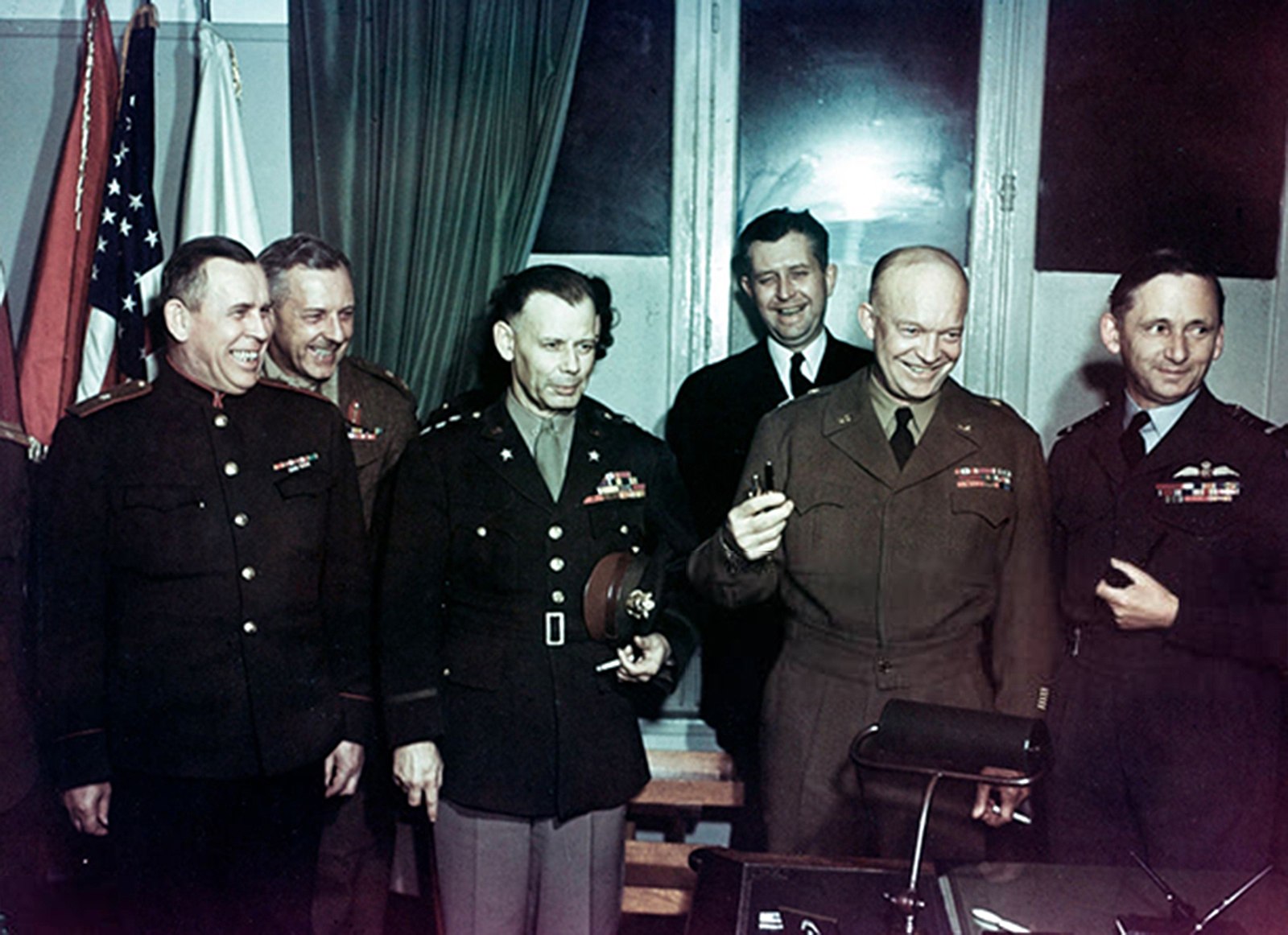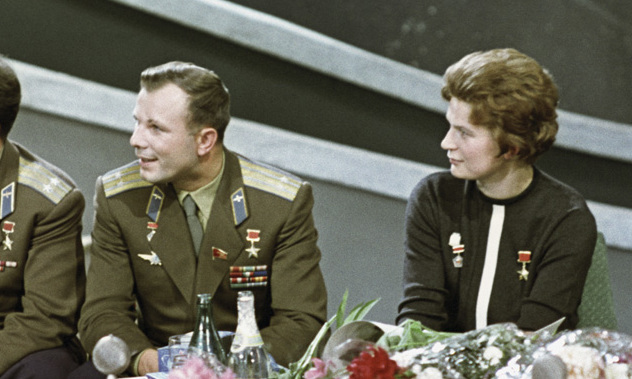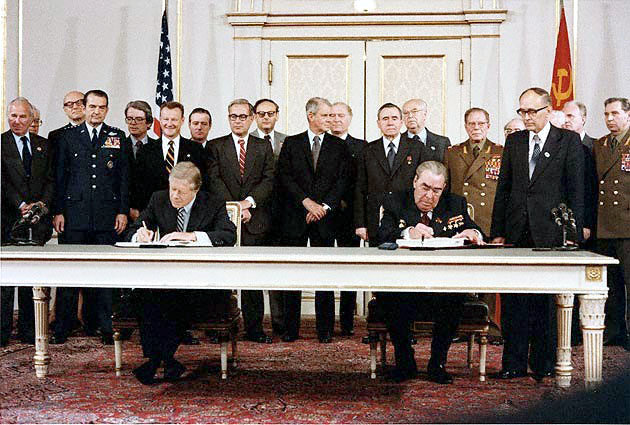the US has undertaken almost 400 military interventions since 1776, with half of these operations undertaken between 1950 and 2019. Over 25% of them have occurred in the post-Cold War period."1
The study argues that many American interventions took place during the Cold War. Furthermore, U.S. foreign policy became more aggressive after the Cold War, even though American opponents, real or perceived, tended to deescalate theirs.
Some historians have also noted the link between U.S. foreign policy and the military-industrial complex. Its rise is traced to the early Cold War period and remains relevant to this day.
Military-Industrial Complex: Definition
A military-industrial complex is an interest group of arms manufacturers (defense contractors), government bodies, lobbyists, intelligence agencies, and other groups and individuals seeking to increase a country's military budget (defense spending) or make it central to policy-making.
Military-Industrial Complex: Cold War
During the Second World War (1939-1945), the Soviet Union, Britain, and the United States were the main Allies responsible for the victory over Nazi Germany in May 1945. They shared different ideologies and had some disagreements over strategy. However, the alliance was highly successful.

Elbe Day, April 1945, when the Soviet troops met the American counterparts near Torgau, Germany. Source: Wikipedia Commons (public domain).
In the U.S., the government led by President Franklin D. Roosevelt helped convert civilian manufacturing to wartime industries. Roosevelt used the War Production Board agency to do so. The World War II era was a precursor to the development of the military-industrial complex.
However, ideological and geopolitical cracks among the Allies began to show when they decided upon the postwar order. The Americans perceived the Soviet Union, which subscribed to socialism (Communism), as an ideological rival.
As a result, the U.S. decided to challenge this ideology—and the Soviet Union—all around the world. Thus was born the Truman Doctrine (1947) and the foreign policy of containment. The United States and the Soviet Union emerged as superpowers after the Second World War, which is why they both had global reach.
This competition led to an extended conflict, the Cold War (1945-1991). The U.S. and the Soviet Union did not engage in a direct military confrontation, but many indirect clashes ensued, including:
| Date | Conflict | Participants |
| 1950-1953 | Korean War | - South Korea, the United States versus
- North Korea, China, and the Soviet Union
|
| 1948-present | Arab-Israeli Conflict | - Israel, United States (1967-present), Britain and France (1956), and others versus
- Iraq, Syria, and Lebanon (1948-present), Egypt (1948-1978), Soviet Union (1967-1991), and others
|
| 1955-1975 | Vietnam War | - North Vietnam, Viet Cong guerillas, Khmer Rouge, North Korea, China, and the Soviet Union versus
- South Vietnam, United States, South Korea, Australia, New Zealand, Cambodia (1967-1970, and others
|
Military-Industrial Complex: Eisenhower
The best-known early critic of the military-industrial complex was President Dwight Eisenhower, who was in office between 1953 and 1961. During the Second World War, Eisenhower was General of the Army and the first Supreme Allied Commander in Europe.

A celebration of Germany’s unconditional surrender in WWII, Reims, France, May 7, 1945, featuring the senior military leadership of the Allies (Soviet Union, Britain, U.S.): Eisenhower is second from the right. Source: U.S. Army, Wikipedia Commons (public domain).
During his time in office, Eisenhower presided over the Korean War and the beginning of the Vietnam War. However, he also shared a realist approach to international relations.
On January 17, 1961, President Eisenhower gave his farewell address. His experience as a soldier made him understand the horrors of war like other American politicians did not. As a result, he warned against the growth of the military-industrial complex:
“This conjunction of an immense military establishment and a large arms industry is new in the American experience. . . .Yet we must not fail to comprehend its grave implications. . . . In the councils of government, we must guard against the acquisition of unwarranted influence, whether sought or unsought, by the military-industrial complex. The potential for the disastrous rise of misplaced power exists and will persist."1
Technology
Many inventions came from the Cold War not only in military technology but also in fields like science and healthcare, including:
- AK-47 assault rifle (USSR)
- Chieftain Main Battle Tank: (Britain)
- Antibiotics
- GPS connected to satellites
- Small recording devices
- The Internet
Intelligence Agencies
The U.S. also created intelligence agencies during the Cold War, such as the CIA (Central Intelligence Agency in 1947. This occurred at the same time as the U.S. defense spending and the military-industrial complex, in general, were growing.
American historians Steven Ambrose and Douglas Brinkley described the CIA's activities as follows:
- overthrowing foreign governments
- meddling in foreign elections
- economic and political warfare
- training and funding paramilitary activities and insurgent groups
Space Race
The space race was the rivalry between the Soviet Union and the United States in space exploration. Science and technology are the focus of space exploration. Science and technology correlate to the arms race, including developing missiles and bombers. The Soviet Union beat the United States in many ways, including:

Yuri Gagarin and Valentina Tereshkova, the first man and woman in space, Soviet Union, 1964. Source: RIA, Wikipedia Commons, RIA Novosti archive, image #628703 / Khalip / CC-BY-SA 3.0.
- Sputnik, the first artificial satellite (1957)
- Luna 2, the first manmade object to touch the Moon (1959)
- Belka and Strelka, the first dogs to successfully return from space (1960)
- Yuri Gagarin, the first man in space (1961)
- Valentina Tereshkova, the first woman in space (1963)
- Venera 7, the first spacecraft (unmanned) to land on Venus (1970)
However, the United States landed the first-ever human mission on the Moon with its Apollo 11 project and astronauts Neil Armstrong and Buzz Aldrin.
Nuclear Arms Race
One of the most critical aspects of the Cold War was the growth of weapons arsenals, which included nuclear weapons. The U.S. was the first to develop the atomic bomb. It was the only country to use it against Japanese cities Hiroshima and Nagasaki in August 1945.

Admiral William H.P. Blandy and his wife cut an Operation Crossroads mushroom cloud cake, Washington, D.C., 7 November 1946. Source: Library of Congress, Wikipedia Commons (public domain).
In the 21st century, these countries possess nuclear weapons:
- United States
- Russia (after the Soviet Union)
- China
- Britain
- France
- Israel
- India
- Pakistan
- North Korea
NATO
NATO (North Atlantic Treaty Organization) was established in 1949 by the United States, Britain, Canada, France, Italy, Belgium, the Netherlands, Iceland, Denmark, Portugal, Norway, and Luxembourg. Its leaders claimed to be a defensive military alliance tasked with providing collective security for Europe and countering the Soviet Union. The Soviet Union established its association, the Warsaw Pact (1955-1991), in response to NATO.
The United States has always been the most significant financial contributor to NATO. NATO supporters state that the organization provides collective security in Europe today. Its critics argue that NATO lost its purpose when the ideological rival of the U.S., the Soviet Union, was no more after 1991. Scholars and statesmen like George Kennan, Henry Kissinger, and John Mearsheimer have argued that NATO has been a destabilizing factor in international relations.
British political scientist Richard Sakwa has even questioned the existence of NATO after 1991 by highlighting the following paradox:
NATO exists to manage the risks created by its existence."3
U.S. Military Bases
According to some estimates, the United States maintains approximately 800 military bases, installations, and other types of troop presence worldwide. All other countries combined keep only a few dozen counterparts.
During the Cold War, the United States established many military bases. However, after 1991, Russia, the legal successor of the Soviet Union, pulled back its troops in east-central Europe. In contrast, the U.S. did not, even though its declared rival, the Soviet Union, dissolved in 1991.
At present, foreign U.S. military presence includes:
- Asia: Okinawa, Japan
- Europe: Ramstein air base, Germany
- Africa: Camp Lemonnier, Djibouti, Horn of Africa
- South America: Eloy Alfaro International Airport, Manta, Ecuador, South America
The American position is that its vast and expensive troop presence around the world is to support its allies. Critics have pointed out that these bases serve as the muscle behind American hegemony worldwide.
Hegemony is a way for one powerful state to dominate others by using direct military and political methods and indirect economic and cultural methods.
U.S. Defense Budget
The United States has the largest defense budget in the world. It exceeds the combined budgets of about a dozen countries next in line, including China and Russia.
Defense Contractors
In the U.S., the largest defense contractors are weapons manufacturers Lockheed Martin and Raytheon. In Britain, it is BAE Systems.
Nuclear Weapons' Treaties and Conferences
In the context of the Cold War, the United States and the Soviet Union grew their weapons arsenals, which included the types of weapons that could carry nuclear warheads. In light of some close calls, such as the Cuban Missile Crisis (1962), the two sides periodically met to discuss a nuclear-arms reduction. The meetings focused on:
- strategic nuclear weapons (extended range)
- non-strategic nuclear weapons (short and intermediate-range)
These meetings terminated agreements, or the agreements expired. Until 2026, the New START treaty between the U.S. and Russia is in effect.

Jimmy Carter (U.S.) and Leonid Brezhnev (Soviet Union) signed SALT II treaty in Vienna, Austria, on June 18, 1979. Source: Wikipedia Commons (public domain).
| Date | Event | Details |
| 1969-1979 | SALT | The Strategic Arms Limitation Talks (SALT), which comprised SALT I and SALT II, featured meetings between the Soviet Union and the United States in the 1970s. SALT sought to limit the number of long-range ballistic missiles that each country possessed and codify the agreements through treaties such as the Anti-Ballistic Missile (ABM) Treaty (1972). The parties involved in the process were: |
| The 1980s-1993 | START | The Strategic Arms Reduction Treaty (START), START I, and START II involved limiting the number of deployed delivery vehicles and nuclear warheads. The treaties were signed in 1991 and 1993, respectively. The parties involved in the process were:- U.S.:Ronald Reagan, George H. W. Bush
- Soviet Union / Russia: Mikhail Gorbachev, Boris Yeltsin
|
| 1987 | INF | Intermediate-Range Nuclear Forces (INF) Treaty was signed in 1987 and focused on non-strategic nuclear arms control. The agreement eliminated short and intermediate ground missiles.The parties involved in the process were: |
Military-Industrial Complex: Significance
The military-industrial complex is an essential part of the American domestic economy and American enforcement of its foreign policy around the world. However, international organizations like the United Nations should play a more significant role in ensuring collective security for all rather than promoting the interests of a single country.
Military-Industrial Complex - Key Takeaways
- A military-industrial complex involves weapons manufacturers, institutions, government bodies, intelligence agencies, lobbyists, and other individuals, as a single interest group seeking to increase a country's military spending.
- The Cold War gave rise to the American military-industrial complex in the context of an arms race with the Soviet Union. This arms race included conventional and nuclear weapons.
- President Eisenhower is specifically associated with the military-industrial complex because he warned about its power.
- The military-industrial complex in the United States remains influential in the 21st century relying on such weapons manufacturers as Lockheed Martin and Raytheon.
References
- Kushi, Sidita and Monica Duffy Toft, “Introducing the Military Intervention Project: A New Dataset on US Military Interventions, 1776–2019,” Journal of Conflict Resolution (8 August 2022), https://doi.org/10.1177/00220027221117546.
- National Archives, “President Dwight D. Eisenhower's Farewell Address (1961),” Milestone Documents, https://www.archives.gov/milestone-documents/president-dwight-d-eisenhowers-farewell-address accessed 8 August 2022.
- Chomsky, Noam. Who Rules the World, New York City: Henry Holt, and Company, p. 237.












